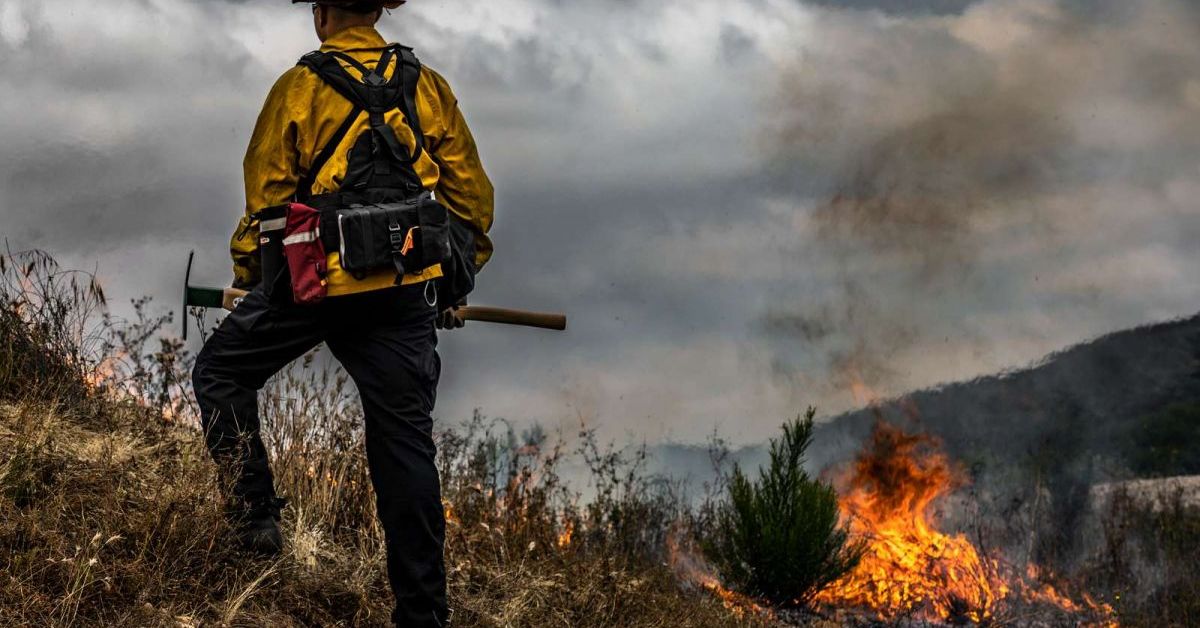WIFIRE Lab Forms New Partnership with U.S. Department of Homeland Security
Joint effort demonstrates workflows utilizing edge computing for wildfire monitoring, response and mitigation
Story by:
Media contact:
Published Date
Story by:
Media contact:
Share This:
Article Content
For the past 10 years, the WIFIRE team at the San Diego Supercomputer Center (SDSC) at UC San Diego has been focused on meeting the growing needs of hazard monitoring, mitigation and response. Most recently, the team has partnered with the U.S. Department of Homeland Security (DHS) to integrate edge computing – a strategy emphasizing data collection and analysis at the site of or geographically near data sources. To showcase the technology’s impact in hazardous settings such as wildfire response and mitigation, the team has completed a concept demonstration for a prescribed burn scenario.
“The WIFIRE infrastructure turns data into a utility for wildland fire scientists and the managers who make decisions based on insights from the data,” WIFIRE Lab Founding Director and Principal Investigator Ilkay Altintas said. “Our WIFIRE Edge platform supports both wildfire response and mitigation scenarios using edge technology, and the concept demo highlights the integrating of these tools for both operational use and research in wildland fires.”
Led by Altintas, SDSC’s chief data science officer, the WIFIRE team includes fire scientists, machine learning experts and data science researchers collaborating to help the fire management community combat wildfires and prevent future occurrences. Edge computing provides the team with even more powerful tools.
“Edge technology allows researchers to garner data that will lead to a deeper understanding of wildland fire,” said WIFIRE Lab Director of Product Management Shweta Purawat. “Edge computing reduces networking requirements by minimizing the need for data to be transferred and processed at a remote data center.”
Prescribed burns – like those shown in a short video explaining the concept demo – are conducted in order to limit an uncontrollable wildfire in the future by reducing hazardous fuel loads that lead to increased risk.
WIFIRE Edge platform integrates live ground sensor data, including live ignitor positions, various environmental measurements and air quality parameters. The platform utilizes a containerized edge service developed by the WIFIRE Lab team that runs on edge compute devices, enabling real-time Fine Dead Fuel Moisture (FDFM) data for prescribed burns. The sensor units developed by Red Line Safety, Inc. are used for this purpose. In the recent concept demo, the WIFIRE team pulled in critical pieces of information to their existing BurnPro3D platform, using sensors to monitor real-time conditions and calculate key determinants of fire behavior to lay the groundwork for modeling how prescribed burns will evolve given current weather conditions and actual ignition patterns. BurnPro3D is developed with NSF support in collaboration with many partners, including LANL, USGS, US Forest Service and USC.
“We imagine a world where, in the future, technologists, scientists and fire managers will collaborate on unique solutions tailored to keep our communities safe and make the best decisions for mitigation and response to fires,” Altintas said. “This new collaboration with DHS allows us to further these efforts and enables us to demonstrate the pathways and scenarios for utilization of edge technologies in wildland fire management.”
WIFIRE was funded by the National Science Foundation (NSF) (grant no. 1331615) under CI, Information Technology Research and SEES Hazards programs (NSF grant nos. 2040676 and 2134904) Convergence Accelerator program, Department of Homeland Security (grant no. 311098-00001), NOAA, NASA, San Diego Gas & Electric, CalOES, Intervalien Foundation, and additional industry and fire agency partners.
Share This:
You May Also Like
Stay in the Know
Keep up with all the latest from UC San Diego. Subscribe to the newsletter today.




